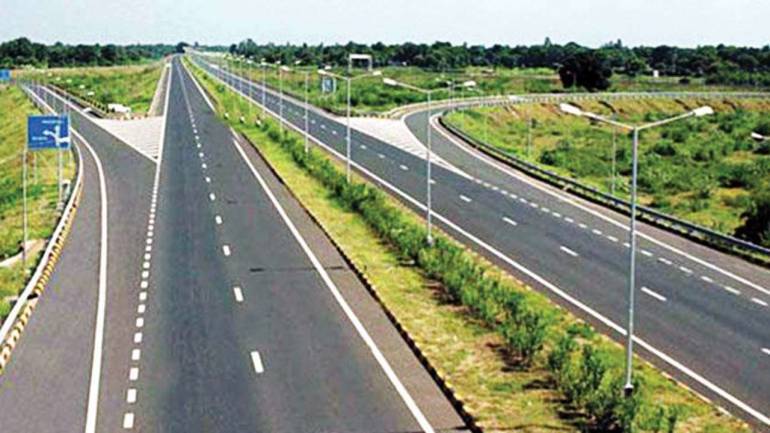Addressing the Indian diaspora at the ‘Sawasdee PM Modi’ event in Bangkok, Thailand, Prime Minister Modi has reiterated his government’s views to bring both nations closer by transforming India’s Northeast region into the gateway to Southeast Asia.
“Once the Indo-Myanmar-Thailand highway i.e. Trilateral Highway starts, there will be seamless connectivity between North East India and Thailand is. This will increase trade, tourism as well as tradition in this region.
“We are developing Northeast India as a gateway to Southeast Asia. This part of India will give strength to both our Act East Policy and Thailand’s Act West Policy,” he said.
“Today, the average flight time between any two destinations of both countries is 2 to 4 hours. This is like if you are flying between two places in India itself. About 300 flights operate between the two countries every week. 18 destinations in India are directly connected to Thailand today,” he added.
The India–Myanmar–Thailand Trilateral Highway will be connecting Moreh, India with Mae Sot, Thailand via Myanmar and is expected to be a huge boost to trade and commerce in the ASEAN–India Free Trade Area, as well as with the rest of Southeast Asia. Commerce with South and East Asian nations accounts for almost 45% of India’s foreign trade.
A highway connecting Moreh in India to Mae Sot via Myanmar was first proposed at a trilateral ministerial meeting on transport linkages in Yangon in April 2002. The length of the four-lane highway is approximately 1,360 km.
A 160 km long India–Myanmar Friendship Road, linking Moreh-Tamu-Kalemyo-Kalewa, was officially inaugurated on 13 February 2001 which now forms a part of the trilateral highway. This road was built by Indian Army’s BRO. The BRO maintained the road until 2009, when it was transferred to the Myanmar government.
India and Myanmar had signed an MoU in 2016 under which India is supposed to fund the construction of 69 bridges, including approach roads in the Tamu-Kyigone-Kalewa section (149.70 km) of the highway, and also upgrade the Kalewa-Yagyi section of 120.74 km. India also provided funding for the renovation of 73 bridges along the route in Myanmar that were originally built during World War II. Both the countries signed an agreement to speed up construction of the highway on 29 August 2016.
The 25.6 km long Myawaddy-Thinggan Nyenaung-Kawkareik section of the highway which was inaugurated by Thai and Myanmar officials on 30 August 2015 reduced travel time between Thinggan Nyenaung and Kawkareik from three hours to 45 minutes. Construction on the section had begun in 2012 and on the same day, a foundation stone laying ceremony was held at Myawaddy, Myanmar to mark the beginning of construction of the Myanmar-Thailand Friendship Bridge No.2 that links Mae Sot, Thailand with Myawaddy.
In February 2017, Myanmar approved a proposal from the Thai government permitting it to upgrade a 68 km section of the road between Thaton in Mon State and Ein Du in Kayin State. The upgrade is being financed by Thailand at a cost of US$51 million. Under the project, the road will be widened and its surface improved. Myanmar also requested Thailand to assist in the development of other sections of the highway.
This Highway when functioning optimally will also boost local industries in Northeast India, with people reaping the benefits of increased movement of goods and services through the region. India has also proposed extending the highway to Cambodia, Laos and Vietnam, the highway is also proposed to link several ports along its route and boost trade and tourism in the region. India is also a part of BIMSTEC, East Asia Summit, Mekong-Ganga Cooperation, United Nations Economic and Social Commission for Asia and the Pacific, Asian Highway Network and the Trans-Asian Railway network and India has embarked on several projects aimed at improving its connectivity with nations to its east.
India is also in talks with Thailand and other Southeast Asian nations regarding deeper strategic cooperation; In what could come as a big boost to India’s defence exports, official sources had earlier indicated towards Thailands interest in purchasing of BrahMos supersonic cruise missiles.
Diplomatic sources had said, “Negotiations are on. It may not happen this year, but most likely next year.” Thailand expressed interest in the BrahMos supersonic cruise missile some time back, however discussions have picked up after Royal Thai Navy Chief Admiral Ruddit’s visit to India in December last year. It must be noted that the navies of the two countries are also working in close co-operation in the areas of disaster risk management, maritime security safety, information sharing and interoperability. As part of the growing defence co-operation between the two countries, Thailand has also requested India for repair and refurbishment of their Dornier maritime patrol aircraft. As per a defence source, “A joint team of Indian Navy, Bharat Electronics Limited and Hindustan Aeronautics Limited visited Thailand in mid-June to discuss the issue.”
Nonetheless the Modi administration over the past few years has certainly shifted focus to the east of India which for long has remained a passive element in India’s foreign policy. Coupled , with change in perspective India surely has been moving towards an environment of greater co-operation with its neighbours to the east and accelerated efforts towards completion of Indo-Myanmar-Thailand highway is certainly one such step.
